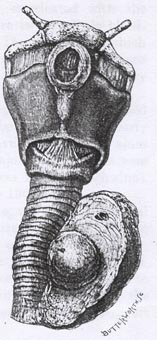October 2004 Newsletter: The first parathyroidectomy

Countless articles and references describe the first recognised successful parathyroidectomy performed by Felix Mandl in 1925 on a Viennese streetcar conductor with osteitis fibrosa cystica. However that procedure may not have been the first successful removal of a parathyroid tumour associated with symptoms of hyperparathyroidism The following extract from Sir John Bland-Sutton’s 1917 textbook of pathology, “Tumours Innocent and Malignant” demonstrates that the first successful parathyroidectomy may well have unwittingly preceded any knowledge of the condition of hyperparathyroidism. “An enormous literature has grown up around the parathyroids. Some surgeons are of the opinion that the importance attached to these minute bodies is exaggerated. Berry regards the parathyroids as outlying portions of thyroid tissue, and believes that their tissue differs from that of the vesicular epithelium only in not having secreted colloid: similar tissue is found in great abundance in embryos and young animals generally; it is undeveloped thyroid tissue. Apart from the physiological aspect, the parathyroids are of interest to surgeons. These bodies lie close to the trachea, and it is obvious that if one should enlarge, even moderately, it would be in a position to exert harmful pressure on the trachea. I have seen two examples. A man aged 36 was found lying on his back in a street adjacent to Middlesex Hospital, apparently in a fit; when brought into the casualty-room he was dead. At post-mortem examination a tumour was found connected with the cervical portion of the windpipe, embedded in a thick fibrous capsule, its inner segment being firmly fixed to the trachea between the fourth and ninth semi-rings. This tumour had fatally compressed the trachea; its central portions had the microscopic structure of a parathyroid. the tumour could have been easily enucleated from its capsule. The second example occurred in a young married woman. She was on a ship in the Red Sea, and had great difficulty in breathing; a small rounded lump was detected in her neck below the thyroid gland. It increased in size and the dyspnoea became so urgent that one night the patient was prepared for tracheotomy and the ship’s surgeon remained by the bedside with his instruments. Fortunately the swelling subsided. On her return to England, I removed a rounded body, as big as a cherry, situated below the lower angle of the thyroid gland on the left side of the trachea. It had the microscopic features of a parathyroid gland.”













